Tools & Materials 
Towels
Closet auger
Plunger with foldout skirt (force cup)
The toilet is clogged and has overflowed. Have patience. Now is the time for considered action. A second flush is a tempting but unnecessary gamble. First, do damage control. Mop up the water if there’s been a spill. Next, consider the nature of the clog. Is it entirely “natural” or might a foreign object be contributing to the congestion? Push a natural blockage down the drain with a plunger. A foreign object should be removed, if possible, with a closet auger. Pushing anything more durable than toilet paper into the sewer may create a more serious blockage in your drain and waste system.
If the tub, sink, and toilet all back up at once, the branch drainline that serves all the bathroom fixtures is probably blocked and your best recourse is to call a drain clearing service.
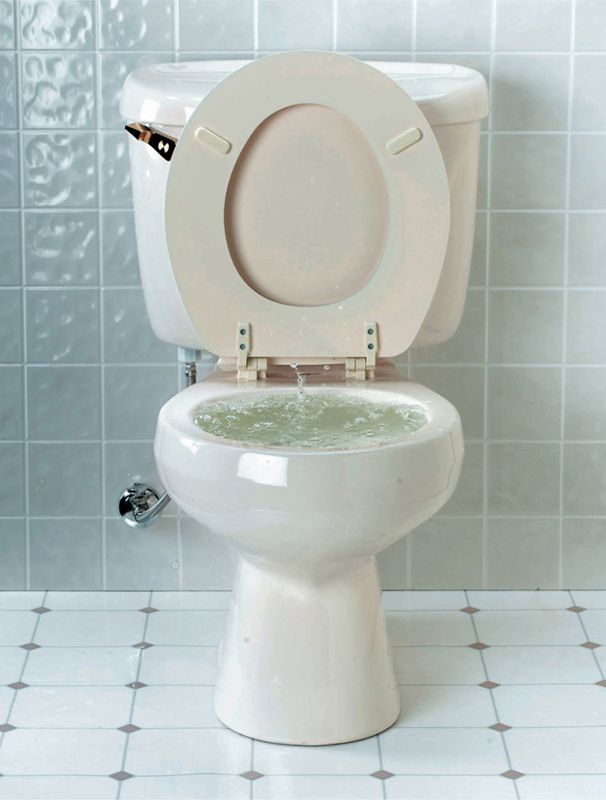
A blockage in the toilet bowl leaves flush water from the tank nowhere to go but on the floor.
The trap is the most common catching spot for toilet clogs, Once the clog forms, flushing the toilet cannot generate enough water power to clear the trap, so flush water backs up. Traps on modern 1.6-gallon toilets have been redesigned to larger diameters and are less prone to clogs than the first generation of 1.6-gallon toilets.
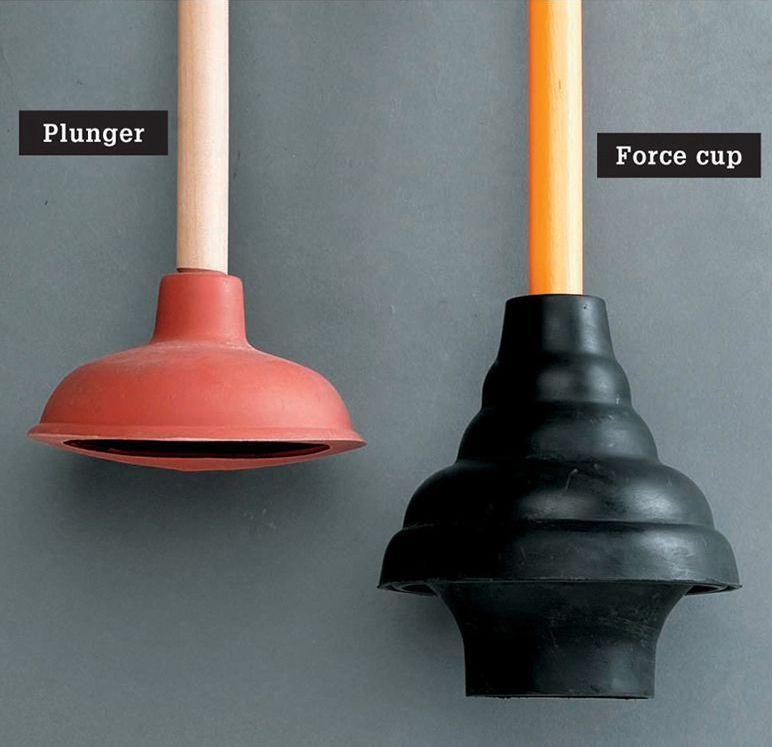
Not all plungers were created equal. The standard plunger (left) is simply an inverted rubber cup and is used to plunge sinks, tubs, and showers. The flanged plunger, also called a force cup, is designed to get down into the trap of a toilet drain. You can fold the flange up into the flanged plunger cup and use it as a standard plunger.
 HOW TO PLUNGE A CLOGGED TOILET
HOW TO PLUNGE A CLOGGED TOILET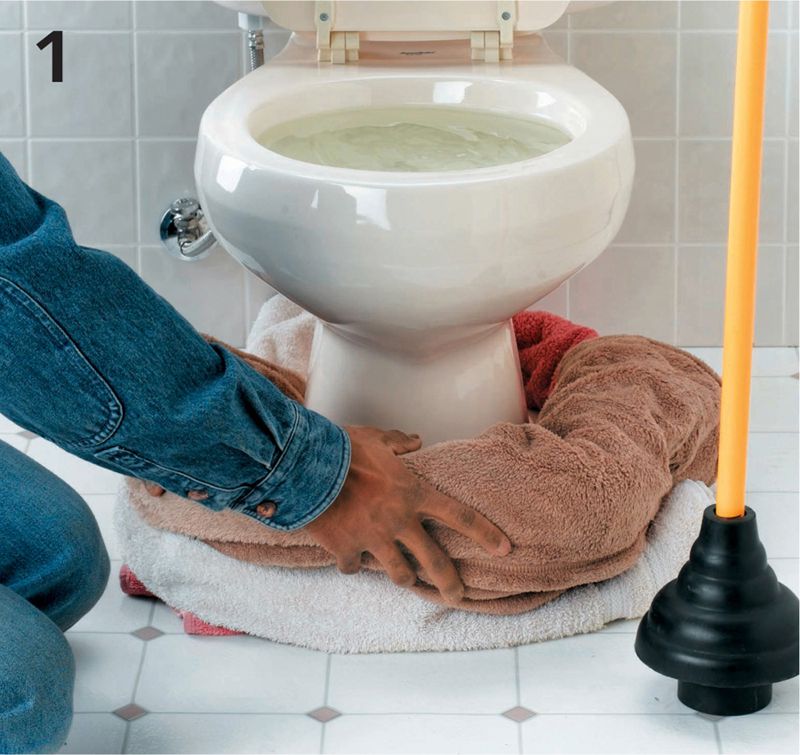
Plunging is the easiest way to remove “natural” blockages. Take time to lay towels around the base of the toilet and remove other objects to a safe, dry location, since plunging may result in splashing. Often, allowing a very full toilet to sit for 20 or 30 minutes will permit some of the water to drain to a less precarious level.
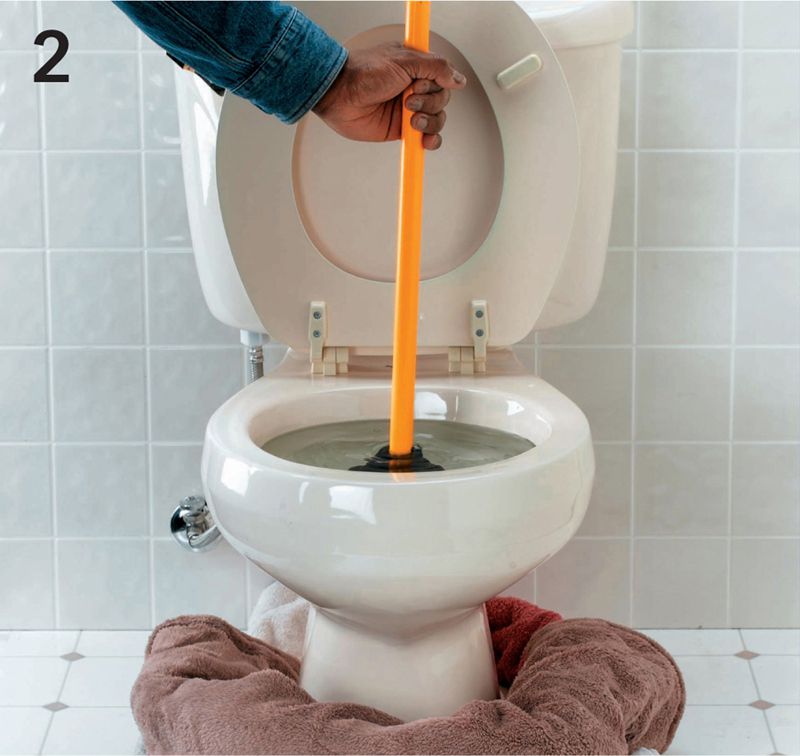
There should be enough water in the bowl to completely cover the plunger. Fold out the skirt from inside the plunger to form a better seal with the opening at the base of the bowl. Pump the plunger vigorously half-a-dozen times, take a rest, and then repeat. Try this for four to five cycles.
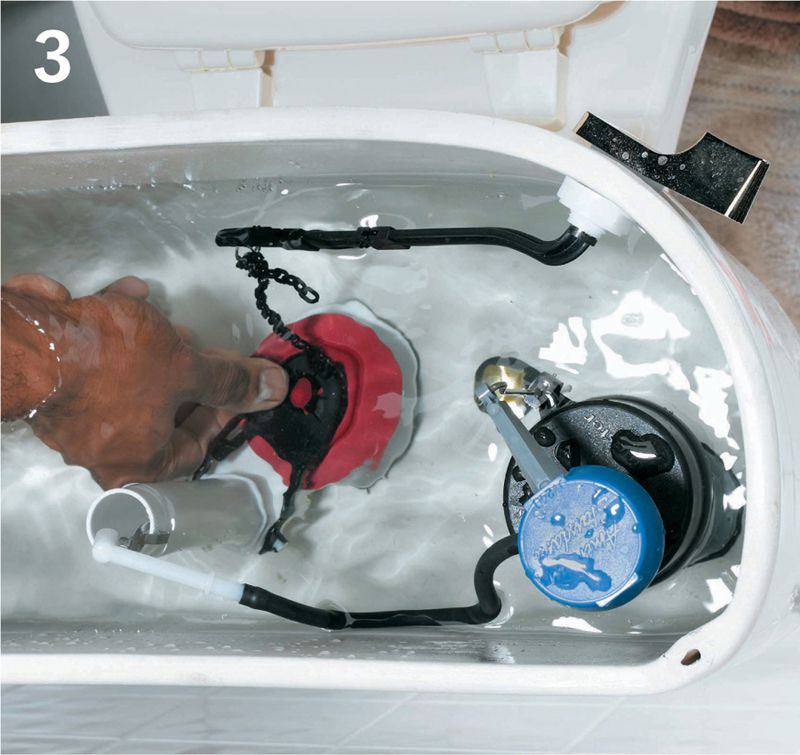
If you force enough water out of the bowl that you are unable to create suction with the plunger, put a controlled amount of water in the bowl by lifting up on the flush valve in the tank. Resume plunging. When you think the drain is clear, you can try a controlled flush, with your hand ready to close the flush valve should the water threaten to spill out of the bowl. Once the blockage has cleared, dump a five-gallon pail of water into the toilet to blast away any residual debris.
 HOW TO CLEAR CLOGS WITH A CLOSET AUGER
HOW TO CLEAR CLOGS WITH A CLOSET AUGERPlace the business end of the auger firmly in the bottom of the toilet bowl with the auger tip fully withdrawn. A rubber sleeve will protect the porcelain at the bottom bend of the auger. The tip will be facing back and up, which is the direction the toilet trap takes.
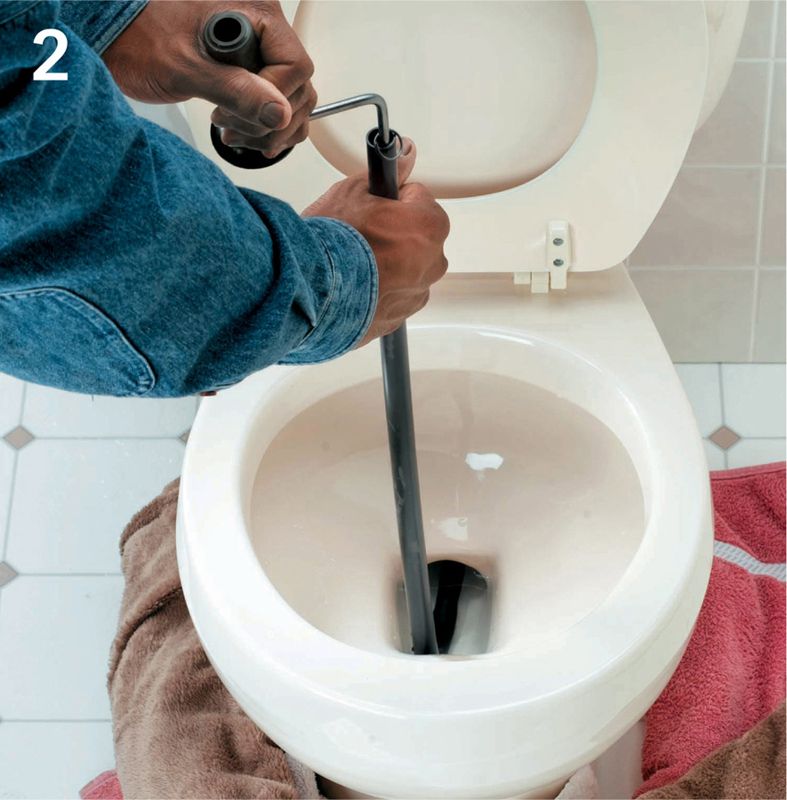
Rotate the handle on the auger housing clockwise as you push down on the rod, advancing the rotating auger tip up into the back part of the trap. You may work the cable backward and forward as needed, but keep the rubber boot of the auger firmly in place in the bowl. When you feel resistance, indicating you’ve snagged the object, continue rotating the auger counterclockwise as you withdraw the cable and the object.
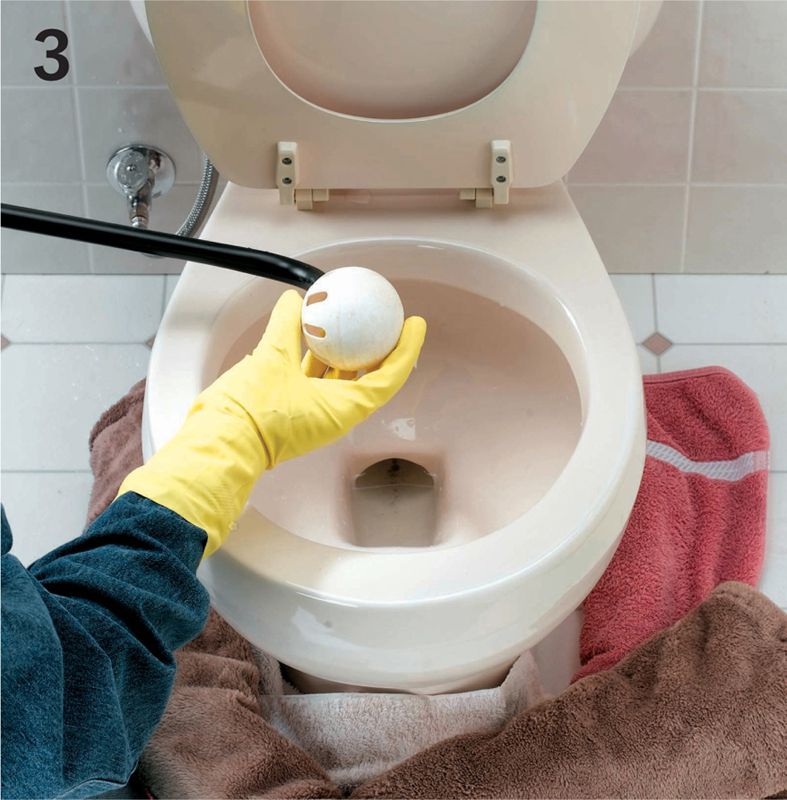
Fully retract the auger until you have recovered the object. This can be frustrating at times, but it is still a much easier task than the alternative—to remove the toilet and go fishing.